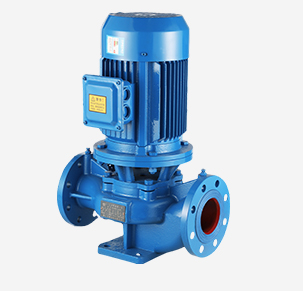English
- Afrikaans
- Albanian
- Amharic
- Arabic
- Armenian
- Azerbaijani
- Basque
- Belarusian
- Bengali
- Bosnian
- Bulgarian
- Catalan
- Cebuano
- Corsican
- Croatian
- Czech
- Danish
- Dutch
- English
- Esperanto
- Estonian
- Finnish
- French
- Frisian
- Galician
- Georgian
- German
- Greek
- Gujarati
- Haitian Creole
- hausa
- hawaiian
- Hebrew
- Hindi
- Miao
- Hungarian
- Icelandic
- igbo
- Indonesian
- irish
- Italian
- Japanese
- Javanese
- Kannada
- kazakh
- Khmer
- Rwandese
- Korean
- Kurdish
- Kyrgyz
- Lao
- Latin
- Latvian
- Lithuanian
- Luxembourgish
- Macedonian
- Malgashi
- Malay
- Malayalam
- Maltese
- Maori
- Marathi
- Mongolian
- Myanmar
- Nepali
- Norwegian
- Norwegian
- Occitan
- Pashto
- Persian
- Polish
- Portuguese
- Punjabi
- Romanian
- Russian
- Samoan
- Scottish Gaelic
- Serbian
- Sesotho
- Shona
- Sindhi
- Sinhala
- Slovak
- Slovenian
- Somali
- Spanish
- Sundanese
- Swahili
- Swedish
- Tagalog
- Tajik
- Tamil
- Tatar
- Telugu
- Thai
- Turkish
- Turkmen
- Ukrainian
- Urdu
- Uighur
- Uzbek
- Vietnamese
- Welsh
- Bantu
- Yiddish
- Yoruba
- Zulu
Telephone: +86 13120555503
Email: frank@cypump.com
Oct . 21, 2024 19:18 Back to list
double suction pump diagram
Understanding the Double Suction Pump A Comprehensive Overview
The double suction pump is a crucial piece of machinery commonly used in various industrial applications, particularly in water supply systems, irrigation, and HVAC systems. Designed for efficient fluid transfer, this type of pump employs a unique operational mechanism that sets it apart from single suction pumps. Understanding its structure and functioning is essential for engineers, technicians, and anyone involved in fluid management.
Structure and Design
At the core of a double suction pump's functionality is its innovative design. As the name implies, a double suction pump has two inlets, allowing fluid to enter the impeller from both sides. This design feature not only enhances the pump's efficiency but also contributes to its stability during operation.
The primary components of a double suction pump include the impeller, diffuser, volute, and motor. The impeller is typically a centrifugal component that spins to create a low-pressure zone, drawing fluid into the pump. The double suction configuration means that the impeller can draw in fluid from both sides, effectively doubling the inflow capacity compared to a single suction model.
Additionally, the volute is designed to convert the kinetic energy generated by the impeller into pressure energy as the fluid exits the pump. The diffuser assists in this energy conversion process, ensuring a smooth flow and minimizing turbulence. These components work harmoniously to ensure that the pump operates efficiently and reliably.
Operational Principles
double suction pump diagram

The operational principle of the double suction pump is based on Bernoulli's theorem, which describes the conservation of energy in fluid flows. When the pump is activated, the impeller rotates, creating a centrifugal force that pushes the fluid towards the outer edges of the impeller. This action creates a low-pressure zone at the center, allowing fluid to be drawn in from both inlets.
The design allows for a more balanced load on the bearings, which reduces vibration and wear. This characteristic is particularly advantageous in high-capacity applications, as it extends the lifespan of the pump and lowers maintenance requirements.
Advantages of Double Suction Pumps
One of the primary advantages of double suction pumps is their ability to handle large volumes of fluid efficiently. With their dual inlets, they can manage high flow rates without compromising on pressure. This makes them ideal for applications in water treatment plants, fire protection systems, and other settings where consistent fluid delivery is crucial.
Additionally, the balanced design reduces mechanical stress, leading to lower noise levels and enhanced operational longevity. The increased energy efficiency translates to lower operating costs, making double suction pumps a cost-effective choice in the long run.
Conclusion
In summary, the double suction pump is a sophisticated solution for fluid transfer, offering numerous advantages over traditional single suction designs. Its unique structure, which allows for dual fluid intake, contributes to higher efficiency, lower operational costs, and extended service life. As industries continue to seek sustainable and efficient methods for fluid management, the double suction pump stands out as a reliable and effective choice for a variety of applications. Proper understanding of its mechanism and advantages will not only aid in selecting the right pump for specific needs but will also ensure optimal performance and longevity in operation.
-
Horizontal Split Case Pump with GPT-4 Turbo | High Efficiency
NewsAug.01,2025
-
ISG Series Pipeline Pump - Chi Yuan Pumps | High Efficiency, Durable Design
NewsAug.01,2025
-
Advanced Flue Gas Desulfurization Pump with GPT-4 Turbo | Durable & Efficient
NewsJul.31,2025
-
ISG Series Vertical Pipeline Pump - Chi Yuan Pumps | Advanced Hydraulic Design&Durable Construction
NewsJul.31,2025
-
ISG Series Vertical Pipeline Pump - Chi Yuan Pumps | Energy Efficient & Low Noise
NewsJul.31,2025
-
pipeline pump - Chi Yuan Pumps Co., LTD.|High Efficiency&Low Noise
NewsJul.31,2025










